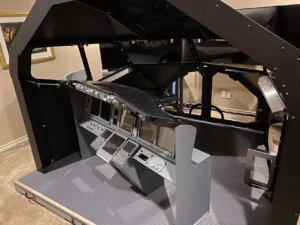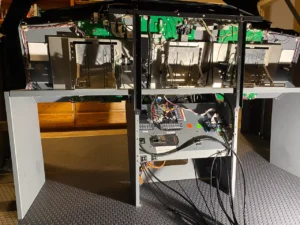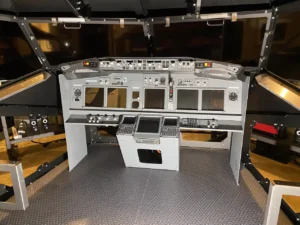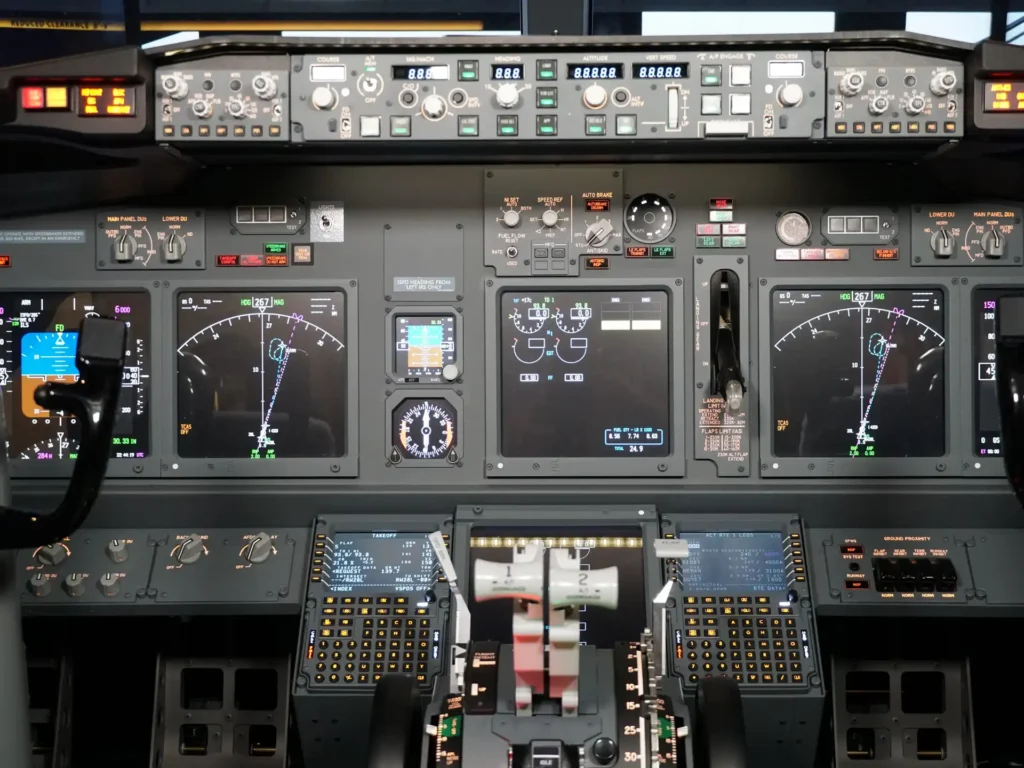The main instrument panel is the heart of the flight deck. It incorporate the Mode Control Panel, dual EFIS panels, dual Annunciator Panels, six displays (PFDs, NDs, engine displays), standby flight instruments, landing gear lever, and dual CDUs. There are also multiple various LED annunciator lights, indicators, gauges, switches, and other controls.
Single Seat Training Devices
There are single seat B737NG training devices available. These incorporate the captain’s side of the real aircraft main instrument panel, as well as some essential controls from the middle. While it might be tempting to start a home flight simulator with this less expensive main instrument panel option, it is usually not a good idea if the ultimate plans are for the flight simulator to be realistic and enclosed in a flight deck shell. If a single seat training device had been purchased, then upgrading it to a full realistic main instrument panel would require forfeiting the expense for the single seat version.
FDS MX Series B737NG Dual Seat Device
This simulator used the FDS MX series B737NG Dual Seat Device purchased from Flight Deck Solutions. Along the top edge, there is a Mode Control Panel (MCP). This has buttons, switches, and LED displays for controlling the automated flight control. The switch for arming the autothrottle is a solenoid switch that will automatically flip itself to the off position when the autothrottle disengage button is pressed on the thrust lever. To either side of the MCP are two Electronic Flight Instrument System (EFIS) Panels. The EFIS Panels are used to adjust various settings for the Primary Flight Display (PFD) and Navigation Display (ND). Finally, at the far left and right are the warning lights, master caution lights, and annunciator panels.



The middle of the main instrument panel houses the five main aircraft displays. These are the Primary Flight Display (PFD) and Navigation Display (ND) for both the captain and the first officer, as well as the upper engine display. Also, the middle section contains the landing gear lever, flap position indicator, autobrake selector, A/P and A/T disconnect annunciators, clocks, standby flight instruments, and various other switches and indicator lights. The flap position indicator functions by LED lights that illuminate to indicate flap position instead of a physical moving needle. Static placards are used for the clocks and hydraulic reservoir pressure indicator.
The lower edge of the main instrument panels has controls for the flight deck lighting and a panel for the Ground Proximity Warning System. In the center, there is a display which is a multifunction display that can be configured to show either secondary engine conditions or hydraulic and flight control status. To either side of this display are Control Display Units (CDUs), one for the captain and one for the first officer. The CDU is used to interface with the Flight Management Computer. The CDU units are B737NG “PRO-MX” versions from Flight Deck Solutions.
There is a power supply that supplies DC power for the main instrument panel components. Interfacing of the LED lights, switches, and controls is done via USB interface boards from Flight Deck Solutions. There are six physical LCD displays that are mounted behind the main instrument panel frame. There are used for:
The graphical outputs for these displays are generated by ProSim737 software modules.



